What are Plant Assets? Definition, Examples, Management
What are plant assets? The assets on a balance sheet contribute to a company's overall profitability and worth. Plant assets are frequently among the most useful and financially supportive assets.
They provide several contributions to a company and understanding how they work can aid in tracking the organization's growth.
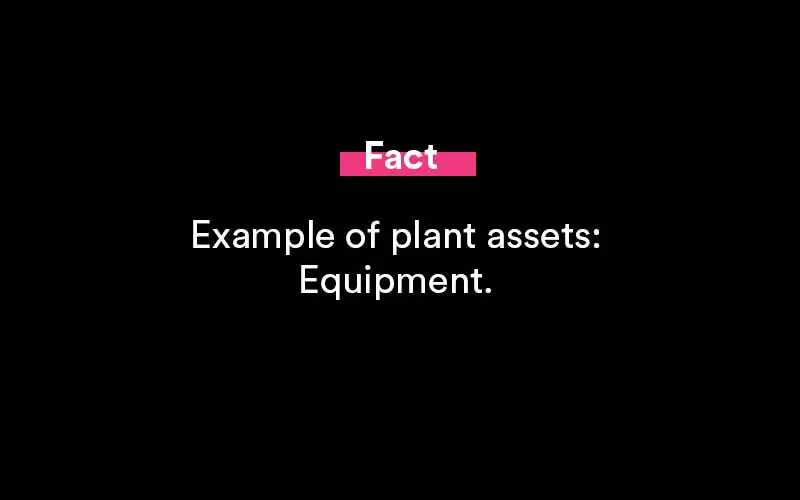
What are plant assets?
Plant assets are long-term fixed assets that are utilized to manufacture or sell a company's products and services. These are physical assets that are expected to be financially useful to a company for more than a year. A plant asset can be defined as any asset that can be utilized to produce revenue for the company.
Because of the term's roots during the Industrial Revolution when plants and factories were the most frequent mode of production for major companies at the time, plant assets are referred to as such. Despite the fact that plant assets are still referred to as such, the assets in this category are no longer confined to factory or plant-related resources.
Depending on the industry and purpose of a company, a number of items might now qualify as plant assets.
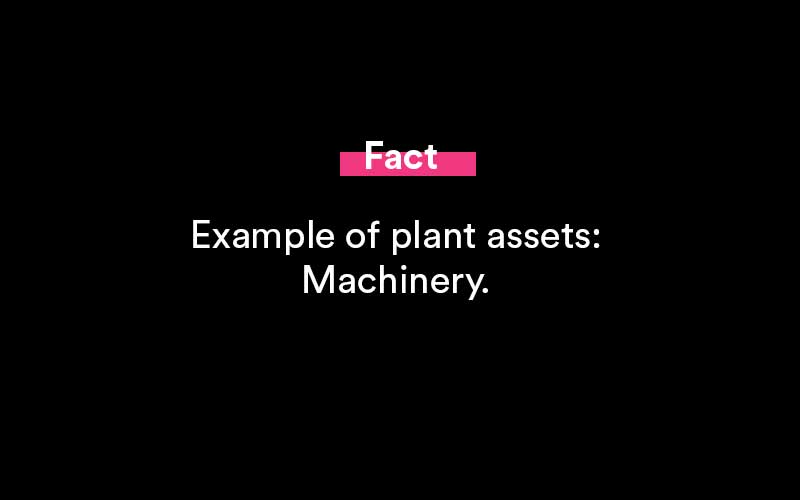
Example of plant assets
A plant asset is any asset that can be utilized to produce revenue for your company. Plant assets are goods that are considered long-term assets because of their high price or worth, even if the assets depreciate. It's crucial to recognize which of your assets are plant assets, regardless of their worth. The goods you can include in this category are usually useful assets that help your business well.
Some examples of plant assets are as follows:
- Equipment and machinery.
- Maintenance of the land.
- Renovation of a construction site.
- Facilities.
- Fixtures and furniture.
- Equipment for the workplace.
- Vehicles.
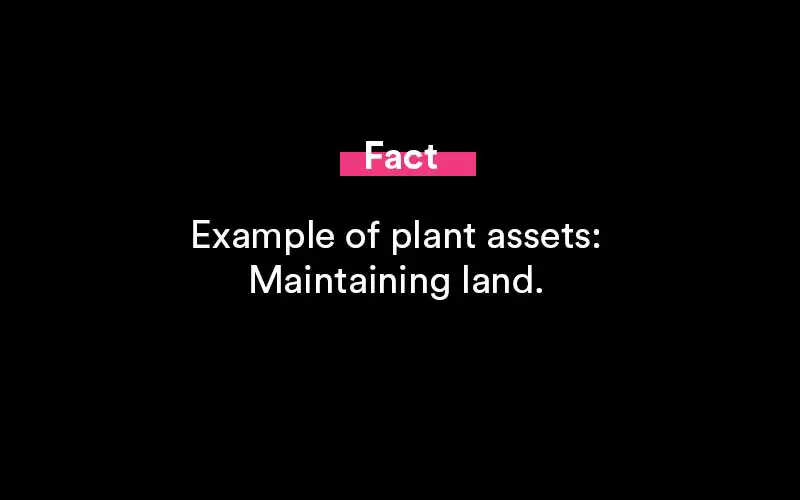
Though plant assets are sometimes seen as expensive, not all have the same value or are prioritized by a company. Rather, it is dependent on the unique requirements of the company. Computers, printers, and other office equipment, for example, are extremely important to a company with a home office and are required for daily operations, but they do not have the same monetary worth as a company's property.
Each asset serves a certain purpose in how it helps a business, and it is more advantageous to focus on their functions rather than their relative worth as long as they serve entities well.
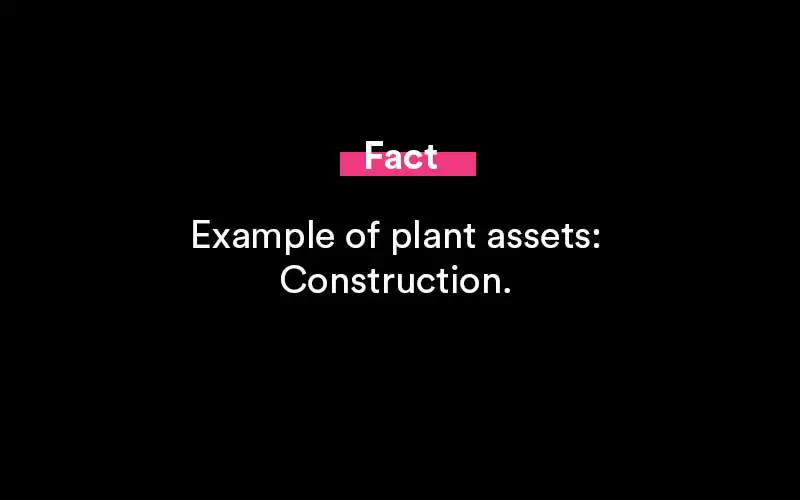
Types of plant assets
Though a company's plant assets can be classified in a variety of ways, categorizing them can assist arrange these assets on a balance sheet. Knowing how to define the many sorts of assets a company has can also help with expense prioritization and reflection. The four types of plant assets are as follows:
Building
Buildings are assets that often retain higher quantities of value, such as office space or a physical location where consumers can do business. This might be a single storefront site for smaller companies or numerous locations or buildings for bigger enterprises.
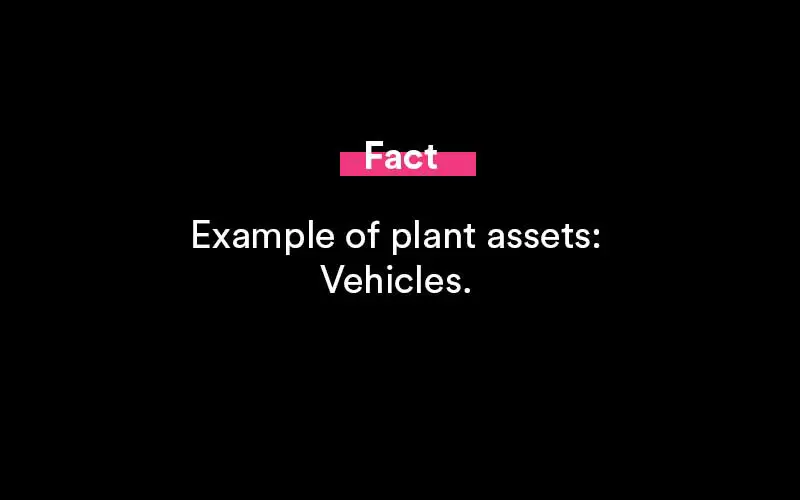
Buildings that can be used as a plant asset aren't limited to offices. Buildings can also contain equipment storage, warehouses for merchandising and sales, or on-site centers that assist employees and staff, especially for bigger companies.
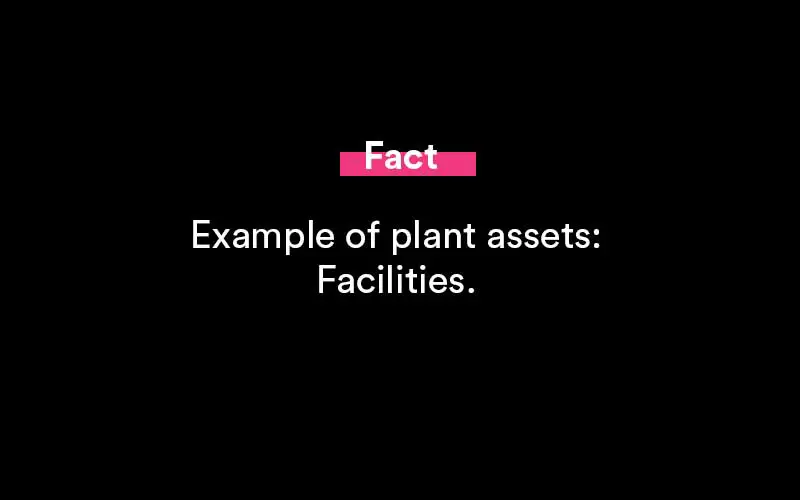
Equipment
Equipment is also quite valuable and crucial to the operation of any organization. It propels operations forward and allows a company to generate money on a consistent basis. Equipment is also one of the most varied forms of plant assets since it differs based on the industry or the specific demands of each company.
While a call center can require a huge number of phones, computers, monitors, and system technology to function well, a laboratory can require many machines, robotics, safety equipment, and science-based technology.
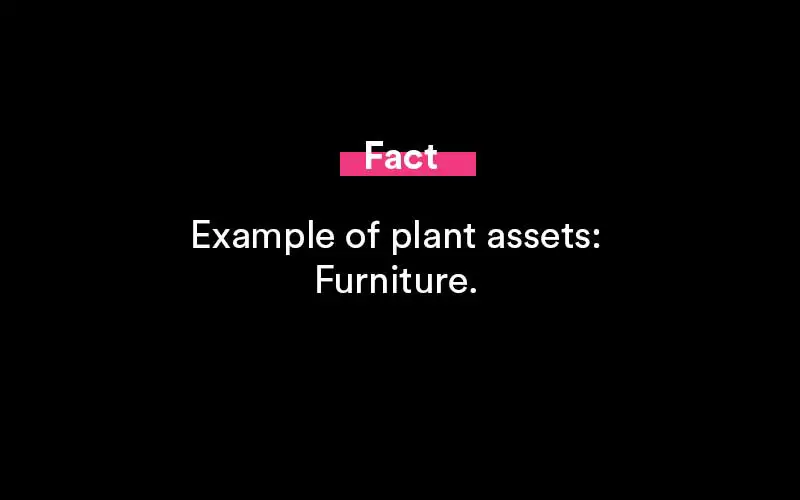
Land
Most companies, especially those that run fully in-house and do not rely on other parties for production or processing, require land. Even if a company does not operate on-site or own property, many businesses profit from purchasing land, even if they do not intend to use it until later.
Land can be purchased by a start-up company for a single site, but a bigger company can possess several types of land that serve diverse functions for the company and its subsidiaries.
In any case, owing to price and duration, property held by a company is generally the most valuable asset. The land is also an asset that is unlikely to deteriorate in value over time.
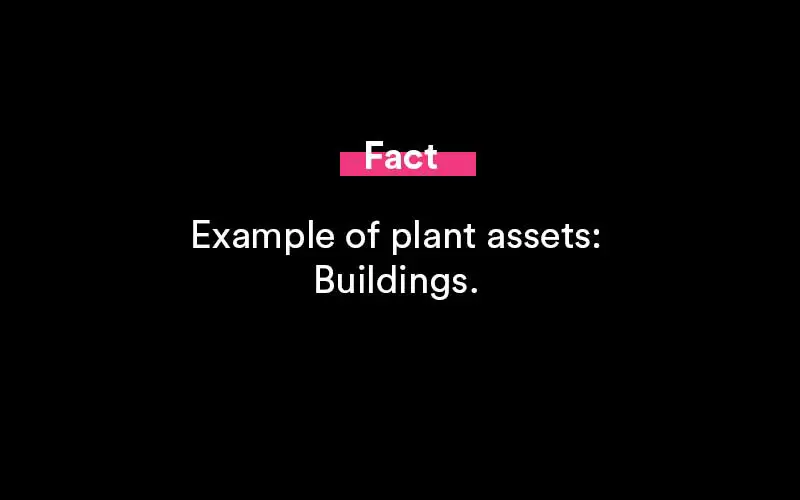
This is crucial to consider when buying land for a business since it might mean the difference between a long-term profit or loss.
Improvements
Making continual improvements and continuously reviewing the quality of assets is an important part of keeping a company healthy. Improvements should be done on a regular basis or when a scenario necessitates intervention to extend the life of assets and avoid future issues with their capacity to serve a business. Improvement for one company will very certainly differ dramatically from that of another.
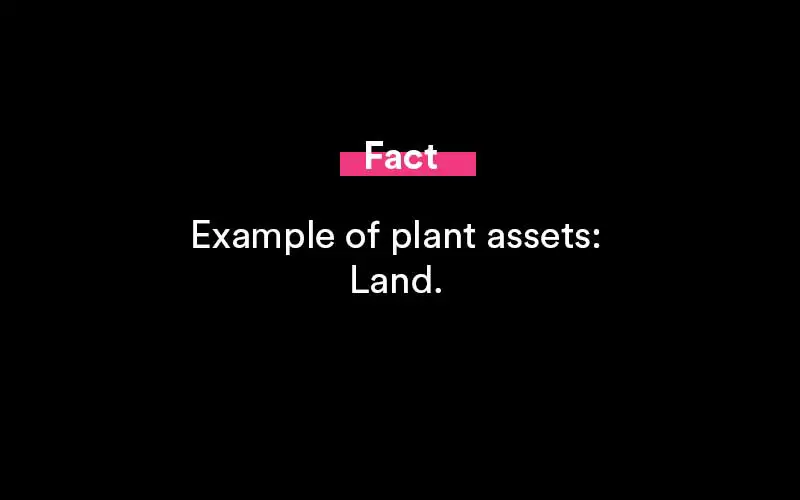
For a restaurant, upgrades can involve repairing light fixtures or acquiring an additional soda machine, but for another company, improvements might entail inspecting the property for plumbing concerns or cleaning away an empty lot for future use.
Despite the fact that upgrades might be costly, they are nevertheless regarded an asset to a company since they constitute an additional investment in ensuring the company's success.
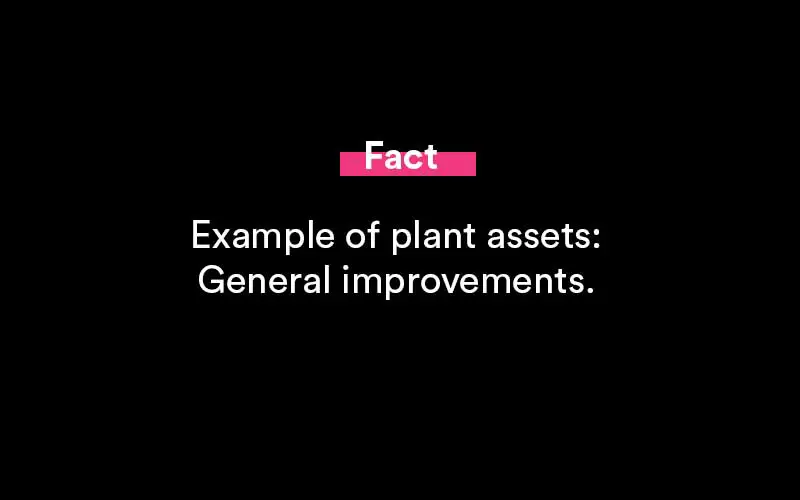
Common questions
Questions regarding plant assets.
What are the most common depreciation methods?
Depreciation and amortization, or the process of expensing an item over a longer period of time than when it was acquired, are calculated on a straight-line basis. It's determined by multiplying the difference between an asset's purchase price and its projected salvage value by the number of years it'll be in use.
What are the four categories of plant assets?
Plant assets are divided into four categories: equipment, land, buildings, and enhancements.
What plant assets are depreciated?
Plant assets are divided into three categories: land improvements, buildings, and equipment.
Each of these types is classified as a depreciable asset since its value to the company and capacity to generate income diminishes during the asset's useful life.
What is the straight-line method?
Depreciation and amortization, or the process of expensing an item over a longer period of time than when it was acquired, are calculated on a straight-line basis. It's determined by multiplying the difference between an asset's purchase price and its projected salvage value by the number of years it'll be in use.
What is a depreciation expense?
Depreciation expenditures, on the other hand, are the appropriate part of the cost of a company's fixed assets for the time period. Depreciation is a non-cash expenditure that decreases the company's net profits and is recorded on the income statement.
What are intangible assets?
A non-physical asset is referred to as an intangible asset. Intangible assets include goodwill, brand awareness, and intellectual property like as patents, trademarks, and copyrights. Tangible assets, like as land, cars, equipment, and inventories, compete with intangible assets.
What is a double-declining depreciation?
When opposed to straight-line depreciation, which utilizes the same amount of depreciation each year during an asset's useful life, the double falling balance depreciation technique is an accelerated depreciation approach that counts as an expense more quickly.
How often should assets be revalued?
Some fixed assets' fair values can be extremely variable, needing revaluations as often as once a year. Revaluations every three to five years are permissible in most other circumstances, according to IFRS.
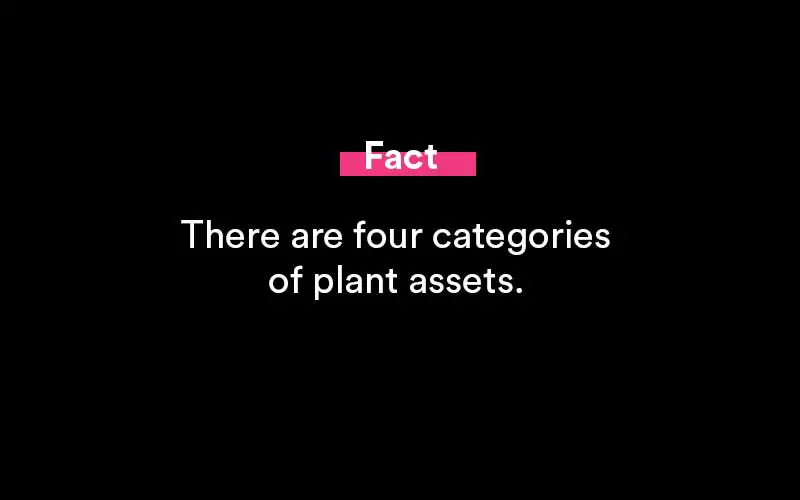
Popular Resources

Featured
35+ Phone Interview Questions & Best Sample Answers
Phone interviews have become a core part of the process when attempting to find a secured placement for an open position. Companies receive massive responses from potential candidates for any..

Featured
12+ Best Questions To Ask A Recruiter
Concerning a job search, you might receive numerous offers from your recruiters. Before you choose one, you need to assess all the conditions, for which it is vital that you know everything associated with the offered position..

Featured
Answering "What Makes You Unique" In A Job Interview
Answering this question during a job interview requires more than knowing why you are unique as an individual. Yes, the true scientific answer is made up of two main components: your..

Featured
250+ Ice Breaker Questions for Life
An ice breaker question is a question that’s asked from one person to another person in order to act as a conversation starter. It brings a connection...

Featured
10 Best Answers to "What Motivates You?"
Open-ended questions like “What motivates you?” can elicit a deer-in-the-headlights reaction from job candidates if they are unprepared. It’s a broad question and can leave the interviewer..

Featured
Answering "How Did You Hear About This Position" In An Interview
A lot of interviewers ask this question - how did you hear about this position? This way they can judge you if you are a passive or an active job seeker..

Featured
8 Best Thank You Emails After an Interview (Samples, Free Templates)
Writing a thank you note after an interview says a lot about you as a potential employee. Most notably, it says that you care about the opportunities presented..

Featured
Writing a Resignation Letter (How To Write It, Samples)
Writing the perfect letter of resignation is more of an art than it is a science. And we’re going to cover how to master that art form in this full guide..

Featured
How to End a Letter (Example Salutations, Sign Off's)
Knowing how to end a business note or email is an important skill to develop. It helps portray a sense of confidence, respect and tone to your message..
